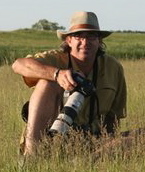
While spending a morning last week on the beach on Sanibel Island, Florida, I was seeing the usual shorebird suspects: willets, sanderlings, and a few ruddy turnstones. Then a flock of chunky birds dropped in, settling among a resting mixed flock of terns and gulls. My first pre-bins guess was dunlin, but when I got them in my binocs I noticed that they were bigger than dunlin, plumper looking, and lacked the dunlin's longer decurved bills. They settled down and immediately tucked their bills under their wings to rest. Could they be tired migrants?

These birds were in drab winter plumage, with uniformly gray-brown backs. They had a medium-length bill. A fair amount of scalloping was on the breast and flanks and the legs were dull yellow and relatively short. There was the hint of an eyebrow and a darkish cap.

This was adding up to be a pretty neat species. Finally the snoozing birds raised their heads and and I felt solid in identifying them as red knots. This is one of our most imperiled shorebird species. Red knots winter along the southern coasts of the U.S. We almost never see this species in Ohio.
 I've seen red knots many times before—usually along the Delaware Bay where they stop in spring migration to feast on the bountiful eggs of horseshoe crabs. Nature in its infinite wisdom and perfect timing, aligned the nesting of horseshoe crabs, which come to shore to deposit their eggs by the millions in spring, with the passage of migrant shorebirds—especially the red knot. The knots fatten up on the tiny green eggs and put on fat necessary to fuel their remaining journey to the northernmost sliver of the North American continent to nest.
I've seen red knots many times before—usually along the Delaware Bay where they stop in spring migration to feast on the bountiful eggs of horseshoe crabs. Nature in its infinite wisdom and perfect timing, aligned the nesting of horseshoe crabs, which come to shore to deposit their eggs by the millions in spring, with the passage of migrant shorebirds—especially the red knot. The knots fatten up on the tiny green eggs and put on fat necessary to fuel their remaining journey to the northernmost sliver of the North American continent to nest.The fishing industry in the East has been over-harvesting horseshoe crabs to use as bait. The resulting reduction in nesting horseshoe crabs has drastically reduced the primary migration food source for the red knot. And this has affected the red knot population, which has dropped more than 50 percent since the 1980s.
It was a privilege to see this small flock of red knots, as yet unbanded, spending the winter here on this beautiful beach. I wished them well in their season of travel to come.






5 comments:
This is a lovely post, B. An unbanded knot is a thing of beauty. I hope it's not too late to save them. Eel bait vs. the survival of red knots seems such a stupid trade to make.
The only thing that bothers me about your post is that it severely understates the rate of Red Knot decline. NJAS, on their web site, says the wintering population had declined by 54% in TWO years, not twenty, and that the population decline over ten years is 80%.
The good news is that NJ has, at least for the moment, stopped all horseshoe crab harvesting.
thanks for your input, RM. The decline is severe, that's for certain.
Lucky you! What a beautiful little bird. I've heard predictions that they will be gone in 5 years--I hope those predictions are wrong.
Great pictures - but shame to read about their decline.
Post a Comment